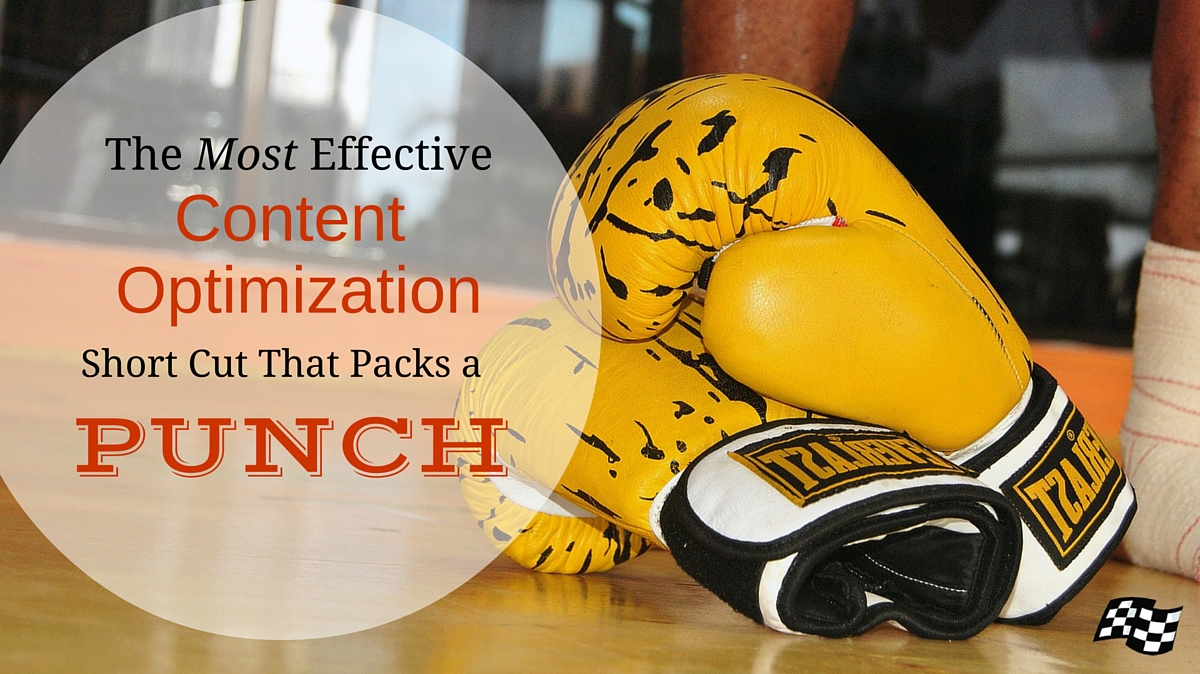
A lot of on-page optimization is focused on keywords. When we talk about optimizing pages we are generally talking about merging keyword topics with content to produce a page that is designed to meet the searcher’s needs. But there is more to optimizing content than just adding in keywords. The web marketer should also be concerned about the messaging of the page, and how to get the visitor from where they are now to where you want them to be.
When done right, this process is very time consuming, especially on sites with hundreds of pages. Unless you have deep pockets to invest a lot of man-hours, optimizing all pages of a large site can take months, if not years.
Instead of performing a complete optimization, one page at a time, there is a short cut that you can take that packs a pretty strong punch. The benefit is more immediate results impacting a bigger portion of your site more quickly. It’s not a replacement for detailed on-page optimization, but it’s a way to get things moving in the right direction.
Tag Optimization
Let’s assume full optimization of a page takes three hours. This includes keyword research and crafting the optimized message. Instead of focusing on all content you can cut that three hours down to less than 30 minutes by looking solely at the tags:
- Title Tag
- Meta Description Tag
- H1 Heading Tag
- Other Heading Tags
- Alt Tags
Optimizing tags of a single page is less effective than optimizing all of the content, but here you’re going for bulk. Optimizing tags cuts out the time consuming aspects of keyword research and optimizing the bulk of the text by putting time into crafting the more visible aspects of the page messaging.
It’s unlikely that tag optimization will have a significant impact on your search engine rankings, but it’ll have a huge impact on visitor performance. Remember, your title and meta description tags are usually what searchers see in the search results. Optimized tags will help improve click through rates from those pages that do come up in the search results–even on obscure searches. More traffic means more business.

And once on the site, the heading tags provide for a better user experience and at least gives them opportunity to consume the biggest messaging signals. Between more traffic and better usability you should start to see that impact your bottom line almost immediately.
Learn more about tags with our SEO 101 ebook, free when you subscribe to our blog.
Of course, once you have optimized all your tags you’ll want to circle back and begin the process of optimizing your pages to the fullest extent. But 300 partially optimized pages are probably going to provide a bigger impact than the 50 fully optimized pages you’d be able to do in a similar amount of time.
Tag optimization is just one way to hit the ground strong and start getting some immediate feedback on your web marketing campaign. It won’t give you that big, long-term boost but it’ll be enough to start the much needed momentum that will help the later optimization perform better.
